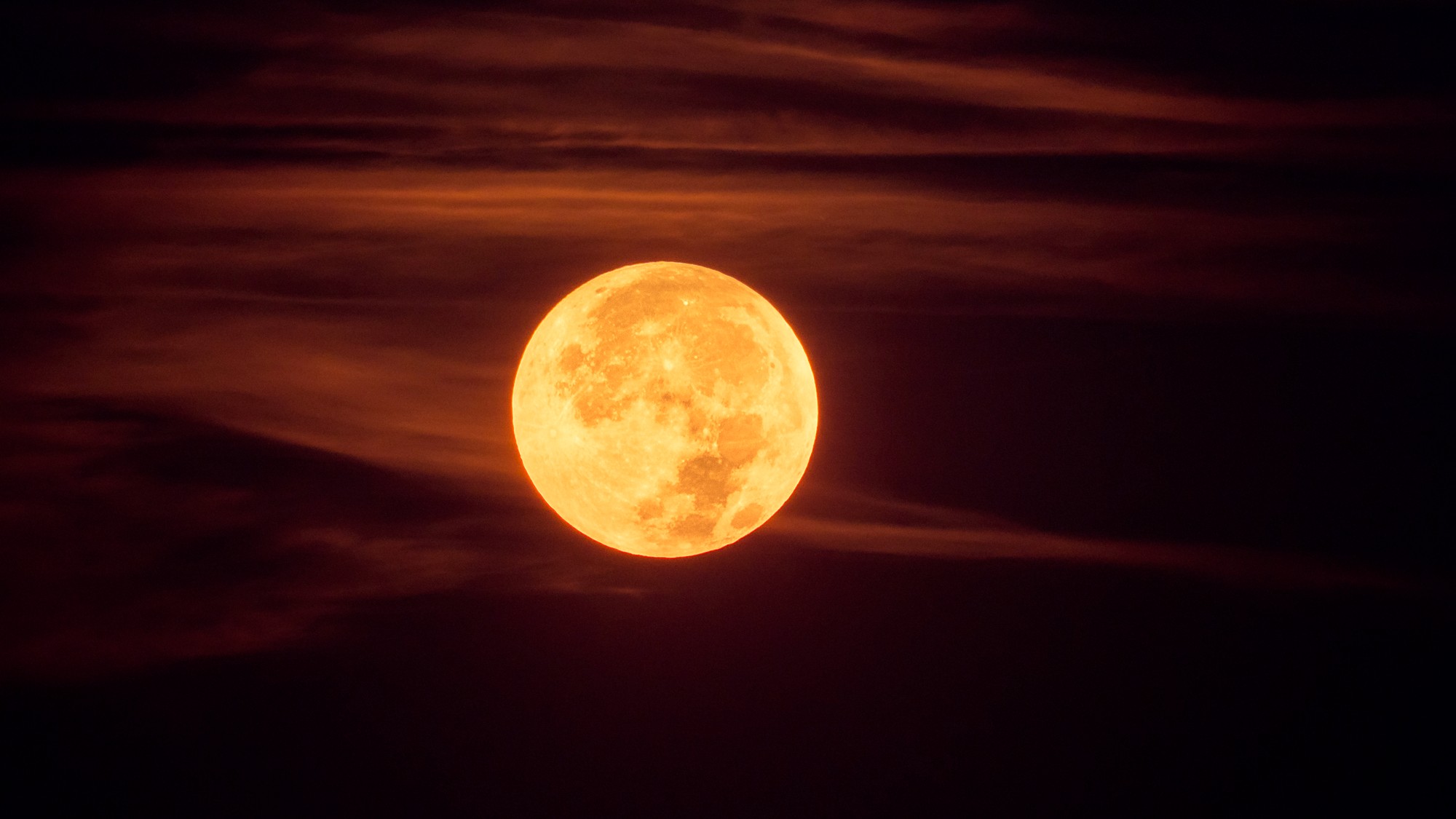Science
New Research Reveals Moon’s Surprising Rusting Origin

The moon is exhibiting signs of rust, a phenomenon previously deemed impossible due to its harsh environment. A new study suggests that the source of this rust, specifically hematite, may be linked to particles from Earth’s atmosphere. This finding opens a new chapter in lunar science, challenging long-held beliefs about the moon’s geological processes.
Discovery of Lunar Rust
Hematite, commonly recognized as rust, was first detected on the moon during India’s Chandrayaan-1 mission in 2020. This discovery puzzled scientists because rust typically forms through oxidation, a process that requires both oxygen and water. Given the moon’s lack of a significant atmosphere and limited water resources, the presence of hematite raised numerous questions. According to Shuai Li, a researcher at the University of Hawaii, “The moon is a terrible environment for hematite to form in.”
Recent research published in the journal Geophysical Research Letters proposes that Earth’s influence may be instrumental in the formation of lunar rust. The study posits that when Earth is positioned between the sun and the moon, a phenomenon known as “Earth wind” occurs, allowing charged particles from Earth’s atmosphere to reach the lunar surface.
Understanding Earth Wind
During the lunar cycle, for approximately five days, Earth blocks solar particles, exposing the moon to ions from Earth’s atmosphere. This “Earth wind” contains nitrogen, hydrogen, and oxygen ions, which can penetrate the lunar soil. The study indicates that these particles facilitate the chemical reactions necessary for rust formation on the moon.
The question of water remains significant. While water exists primarily as ice at the lunar poles, researchers speculate that hematite may have originally formed in these regions and subsequently spread across the moon’s surface. This hypothesis is supported by the unique conditions of the lunar environment and highlights the complexity of lunar geology.
The intriguing nature of lunar rust also extends to the potential for its reduction. The presence of hydrogen ions from Earth wind can reverse the rusting process. Researchers tested this by irradiating hematite with both high-energy and low-energy hydrogen ions. They discovered that high-energy ions effectively reduced hematite back to metallic iron, while low-energy ions had minimal impact. This leads to a critical understanding: the retention of rust on the moon depends on the energy and ratio of oxygen and hydrogen ions arriving from Earth wind.
These findings underscore the intricate material exchange between Earth and the moon, suggesting a more dynamic relationship than previously understood. Despite the compelling evidence, researchers caution that laboratory conditions may not fully replicate the moon’s environment. Therefore, further research, ideally conducted on the moon itself, is necessary to validate these processes.
The implications of this research extend beyond mere curiosity. Understanding the mechanisms behind lunar rust could provide valuable insights into the moon’s geological history and its interactions with Earth. As scientists continue to explore these connections, the moon may reveal even more of its secrets in the years to come.
-

 Lifestyle5 months ago
Lifestyle5 months agoLibraries Challenge Rising E-Book Costs Amid Growing Demand
-

 Sports4 months ago
Sports4 months agoTyreek Hill Responds to Tua Tagovailoa’s Comments on Team Dynamics
-

 Sports4 months ago
Sports4 months agoLiverpool Secures Agreement to Sign Young Striker Will Wright
-

 Lifestyle4 months ago
Lifestyle4 months agoSave Your Split Tomatoes: Expert Tips for Gardeners
-

 Lifestyle4 months ago
Lifestyle4 months agoPrincess Beatrice’s Daughter Athena Joins Siblings at London Parade
-

 Science4 months ago
Science4 months agoSan Francisco Hosts Unique Contest to Identify “Performative Males”
-

 World4 months ago
World4 months agoWinter Storms Lash New South Wales with Snow, Flood Risks
-

 Science5 months ago
Science5 months agoTrump Administration Moves to Repeal Key Climate Regulation
-

 Business5 months ago
Business5 months agoSoFi Technologies Shares Slip 2% Following Insider Stock Sale
-

 Science5 months ago
Science5 months agoNew Tool Reveals Link Between Horse Coat Condition and Parasites
-

 Sports4 months ago
Sports4 months agoElon Musk Sculpture Travels From Utah to Yosemite National Park
-

 Science5 months ago
Science5 months agoNew Study Confirms Humans Transported Stonehenge Bluestones









